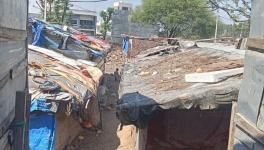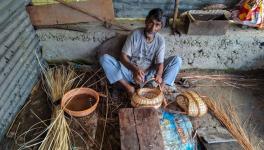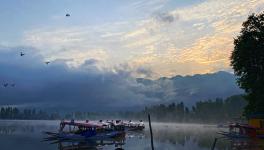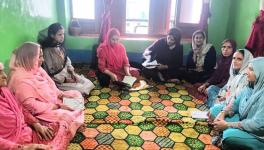Ayodhya’s Celebration is Incomplete Without Srinagar’s Sorrow
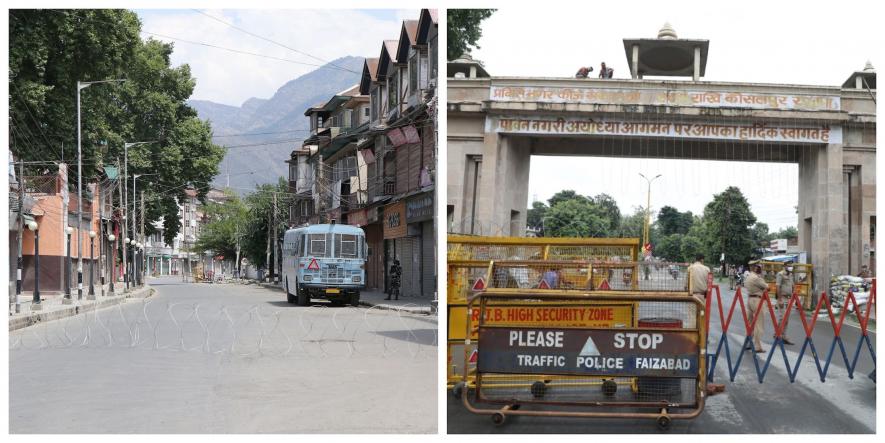
The day before 5 August, Ayodhya and Srinagar were pictures in contrast. Ayodhya was breathless with anticipation for the bhoomipujan scheduled to be performed today. Saffron flags fluttered, houses overlooking roads had been given a fresh coat of paint, and there was much speculation about who had been invited to witness Prime Minister Narendra Modi perform the puja. Ayodhya awaited its tryst with destiny.
Hundreds of miles away, on the evening of 4 August, police vehicles criss-crossed Srinagar, announcing over the loudspeaker the administration’s decision to impose curfew in the city for two days. The curfew was subsequently extended to the entire Valley, ostensibly because the administration had information that the separatists and Pakistan-sponsored groups were planning to observe 5 August as Black Day.
It was on 5 August 2019 that the Union government read down Article 370, annulled the special status of Jammu and Kashmir, carved out Ladakh from it, and demoted its status from a state to a Union Territory. The change was depicted as one big leap to a Naya or New Kashmir. Curfew seemed a funny way of celebrating the new dawn.
The two contrasting pictures will be etched in our memories, for 5 August will connect Ayodhya’s joys to Srinagar’s sorrow. Ayodhya’s celebrations would have been incomplete without Srinagar’s suffering. This is because the triumph of Hindutva is predicated on the defeat of its presumed adversaries—and their humiliation in perpetuity.
Hindutva had won in Ayodhya on several occasions in the past. It had won on the night of 22-23 December 1949, when the idol of Ram was surreptitiously installed in the Babri Masjid. It had won again on 6 December 1992, the day the Babri Masjid was razed to the ground. The Supreme Court judgement of 9 November allowing the Hindus to build the Ram temple in Ayodhya merely formalised its past victories.
The performance of the bhoomipujan at a vacant spot is visually bereft of suggestions of a conquest, certainly for those who were born much after 1992 or were too young then to have memories of the demolition of the Babri Masjid. Hindutva thrives on displaying strength. Its votaries must remain in thrall to the idea of permanent Hindu domination.
From this perspective, Srinagar is as pressing a psychological necessity for Hindutva as Ayodhya is. This was perhaps why 5 August was chosen as the day for performing the bhoomipujan in Ayodhya, although opinion in the Hindu priestly class is still divided whether August is an auspicious period to commence an activity of immense import.
Even as Ayodhya celebrates today, Kashmiris will mourn behind closed doors, in silence, ruminating over their fate. A public mourning can be cathartic, even elevating. But Srinagar had to be denied its right to express its sorrow collectively because it would have otherwise made Hindutva feel grossly incomplete, its victory only partial.
Hindutva draws its philosophical sustenance from “the other”, which include all those who consider India as only their fatherland but not their holy land. Hindutva excludes Muslims from its construct of Hindu nation (as it does Christians and all those who do not subscribe to the concept of primacy to Hindus in Indian democracy).
For Hindutva, Kashmiris are Muslim, to be lumped together with their brethren residing elsewhere in India—and treated likewise. This is bad news for them because Hindutva must perpetually strive to dominate the other. It must be psychologically satiating for Hindutva supporters to see Muslim Kashmir under curfew, have them wallow in their misery, as they celebrate the bhoomipujan in Ayodhya.
Hindutva’s thirst for permanent domination presages a tumultuous future.
For Jammu and Kashmir, the Domicile Certificate (Procedure) Rules, 2020 threaten a demographic change there. Already nearly 4 lakh people have been given domicile certificates. As this Newsclick story shows, 17.4 lakh out-state migrants can potentially acquire domicile certificates because they have, under the 2020 Rules, lived in J&K for 15 years. So can all those who have studied there for seven years and appeared for Class X or Class XII examinations. Ditto the children of “Central Government officials, All India Service Officers” and all those who have served in J&K for a “total period of 10 years.”
It does seem the new domiciles, as of now, can acquire land in the Union Territory, largely because all legal provisions barring state subjects, a category done away with the abolition of Article 35A, from transferring land to outsiders have been removed. In addition, the J&K government has amended laws that allow it to declare certain areas as “strategic” in terms of the requirement of the Armed Forces. In such areas, the construction activity will be regulated through a special dispensation.
An aspect of Hindutva’s demonstration of dominance is to curb the freedom of speech and muzzle the independent media. The J&K government recently formulated a new media policy, under which the antecedents of publishers and editors of media outlets will be checked before these are empanelled for receiving government advertisements.
The new policy also states that the government will monitor media outlets’ content to identify “fake news, plagiarism and unethical or anti-national activities.” Those found guilty will be denied government advertisements, which is the source of sustenance for the J&K media, given the lack of vitality in its private sector, further aggravated by the months of lockdown imposed in the wake of 5 August decisions last year and then, in March this year, to curb the community transmission of the Novel Coronavirus.
Politically, the process of delimitation will shift the pivot of power from Srinagar to Jammu. Those who style themselves as the bridge between India and Kashmir will be put out of business. Or their quest for power will have them accept the new political reality—and strive to have their people accept it as well. Civilians will die, as will soldiers, and the silence of today will grow until it will re-learn to speak.
Outside Kashmir, Muslims will continue to be targeted for a variety of causes, all of which will only whet Hindutva’s appetite for continuous and permanent domination. Nobody knows whether the inter-linked exercise to prepare the National Population Register and the National Register of Indian Citizens has been abandoned. Will its revival pull out the Muslims to protest, given their experience of the violence that was orchestrated against them, the motivated investigations undertaken to book them under draconian laws?
Will they muster the support of non-Muslims, in whatever numbers, since the authorities too have targeted them? Then there is a petition pending in the Supreme Court challenging the Places of Worship Act, 1991, which freezes their ownership as it was on 15 August 1947. There are mosques that Hindutva has always wanted to convert into temples.
There is also the issue of the Uniform Civil Code that seductively beckons Hindutva. There are intellectuals who can always be dubbed as “urban Naxals” and thrown into jail. As Hindutva conjures issues to repeatedly vanquish the defeated, mainstream political parties, as their counterparts in J&K, will rediscover their irrelevance. Through all the pandemonium, which hopefully will not turn violent, the Supreme Court will find reasons to delay hearing the habeas corpus petitions.
So it is that the contrasting pictures of Ayodhya and Srinagar will become India’s default mode—the path to dominance and celebration must inflict suffering on some.
The author is an independent journalist. The views are personal.
Get the latest reports & analysis with people's perspective on Protests, movements & deep analytical videos, discussions of the current affairs in your Telegram app. Subscribe to NewsClick's Telegram channel & get Real-Time updates on stories, as they get published on our website.









